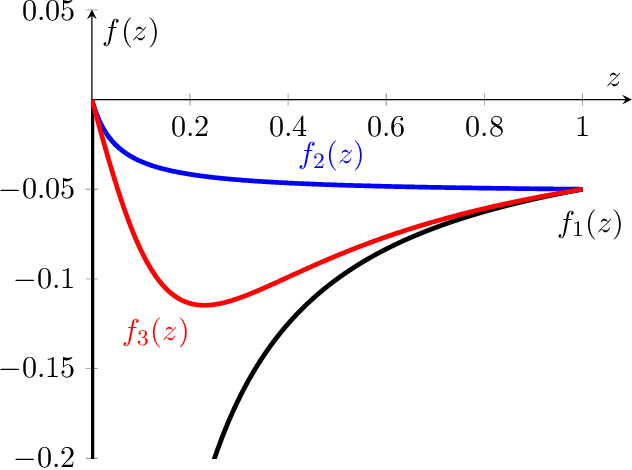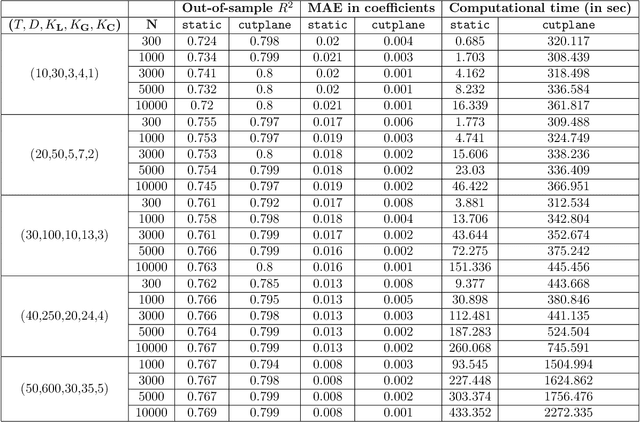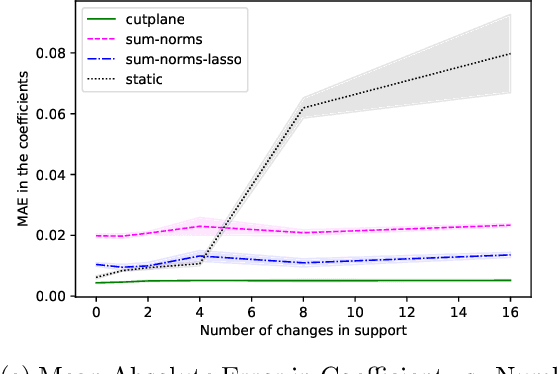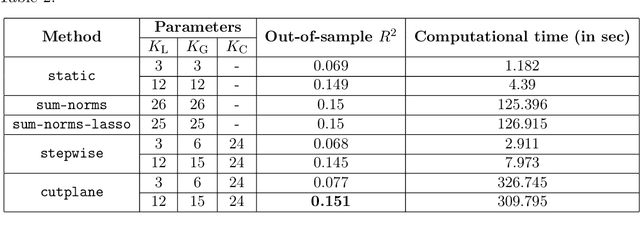Vassilis Digalakis Jr.
Slowly Varying Regression under Sparsity
Feb 22, 2021



Abstract:We consider the problem of parameter estimation in slowly varying regression models with sparsity constraints. We formulate the problem as a mixed integer optimization problem and demonstrate that it can be reformulated exactly as a binary convex optimization problem through a novel exact relaxation. The relaxation utilizes a new equality on Moore-Penrose inverses that convexifies the non-convex objective function while coinciding with the original objective on all feasible binary points. This allows us to solve the problem significantly more efficiently and to provable optimality using a cutting plane-type algorithm. We develop a highly optimized implementation of such algorithm, which substantially improves upon the asymptotic computational complexity of a straightforward implementation. We further develop a heuristic method that is guaranteed to produce a feasible solution and, as we empirically illustrate, generates high quality warm-start solutions for the binary optimization problem. We show, on both synthetic and real-world datasets, that the resulting algorithm outperforms competing formulations in comparable times across a variety of metrics including out-of-sample predictive performance, support recovery accuracy, and false positive rate. The algorithm enables us to train models with 10,000s of parameters, is robust to noise, and able to effectively capture the underlying slowly changing support of the data generating process.
From predictions to prescriptions: A data-driven response to COVID-19
Jun 30, 2020Abstract:The COVID-19 pandemic has created unprecedented challenges worldwide. Strained healthcare providers make difficult decisions on patient triage, treatment and care management on a daily basis. Policy makers have imposed social distancing measures to slow the disease, at a steep economic price. We design analytical tools to support these decisions and combat the pandemic. Specifically, we propose a comprehensive data-driven approach to understand the clinical characteristics of COVID-19, predict its mortality, forecast its evolution, and ultimately alleviate its impact. By leveraging cohort-level clinical data, patient-level hospital data, and census-level epidemiological data, we develop an integrated four-step approach, combining descriptive, predictive and prescriptive analytics. First, we aggregate hundreds of clinical studies into the most comprehensive database on COVID-19 to paint a new macroscopic picture of the disease. Second, we build personalized calculators to predict the risk of infection and mortality as a function of demographics, symptoms, comorbidities, and lab values. Third, we develop a novel epidemiological model to project the pandemic's spread and inform social distancing policies. Fourth, we propose an optimization model to re-allocate ventilators and alleviate shortages. Our results have been used at the clinical level by several hospitals to triage patients, guide care management, plan ICU capacity, and re-distribute ventilators. At the policy level, they are currently supporting safe back-to-work policies at a major institution and equitable vaccine distribution planning at a major pharmaceutical company, and have been integrated into the US Center for Disease Control's pandemic forecast.
 Add to Chrome
Add to Chrome Add to Firefox
Add to Firefox Add to Edge
Add to Edge